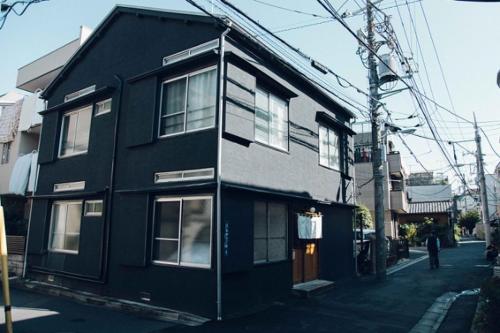Asakura Museum of Sculpture
menuMenu
A museum renovated from the studio and residence where sculptor Fumio Asakura spent his later years. Glimpse his art and life through his works and personal belongings.

Highlights
- Admire the works of sculptor Fumio Asakura
- Tour the studio and residence where Asakura spent his later years
- Experience the unique building designed by Asakura himself
- Stroll through the courtyard's Japanese garden
- Enjoy a view of the Tokyo Skytree from the rooftop garden
Basic Information
- Address
- 7-18-10 Yanaka, Taito-ku, Tokyo Search for tourist attractions in Tokyo
- Access
- 5-minute walk from Nippori Station North Exit, JR Yamanote and Keihin-Tohoku Lines Show route
- Op.Hours
- 9:30 AM - 4:30 PM
- Cld.Days
- Every Monday and Thursday (the following day if a holiday falls on Monday or Thursday), Year-end and New Year holidays, and special maintenance periods.
- Fee
- General Admission: ¥500, High school/University students: ¥300, Children (Junior high school and below): Free
- INFO
- Admission fee applies. Shoes are not permitted inside the building; you must place your shoes in a bag provided and view the exhibits in socks. Slippers are not provided, so please wear socks. Photography is prohibited in some exhibition rooms.
Overview
Recommended nearby attractions
Former Asakura Residence

Escape the urban hustle and bustle and step into a world of tranquility. Enjoy a leisurely stroll through a beautiful Japanese-style garden and a building that retains the atmosphere of the Taisho era.
Machida City Museum of Graphic Arts

Appreciate precious works gathered from Japan and abroad at this specialized print museum.
Gokokuji Temple

A historic temple rich in nature, offering a tranquil escape from the bustling city.
Nezu Museum

A haven in the city where you can simultaneously enjoy "treasures of East Asian art" and a "lush, verdant garden."
Tokyo Sword Museum

A rare opportunity to view a collection of historic Japanese swords up close.
Former Iwasaki Residence Garden

The former residence and garden of Iwasaki Hisaya, eldest son of Iwasaki Yataro, the founder of the Mitsubishi zaibatsu. The Western-style building is designated as an Important Cultural Property of Japan, representing a prime example of modern Japanese Western-style wooden architecture.
Eisei Bunko

A museum where you can experience history and culture, boasting 8 National Treasures and 32 Important Cultural Properties.
Tokyo Art Museum

Experience contemporary art in an exquisitely designed museum by renowned architect Tadao Ando.
Seikado Bunko Museum

Seikado Bunko Museum is an art museum showcasing the best of East Asian art. It houses a precious collection of National Treasures and Important Cultural Properties, offering a profound experience of history and art.
Kyū Horita-tei (Sakura Garden)

Experience the history and beauty of a former daimyo mansion built in the Meiji era, preserving the grandeur of a bygone age.
Nearby Hotels
hanare

nippori hotel harmony

[AloBnb2] Near Nippori,Sendagi,Yanaka - Max. 8ppl
![[AloBnb2] Near Nippori,Sendagi,Yanaka - Max. 8ppl](https://pix3.agoda.net/hotelimages/6581404/0/72f40afbecec2f8203545faa5125a5d4.jpg?s=380x&ce=0)
Annex Katsutaro Ryokan

APA Hotel TKP Nippori Ekimae

プチホテル コスモス

Putit HOTEL COSMOS

Sakura Hotel Nippori

ART HOTEL Nippori Lungwood

Hotel Livemax BUDGET Nippori

